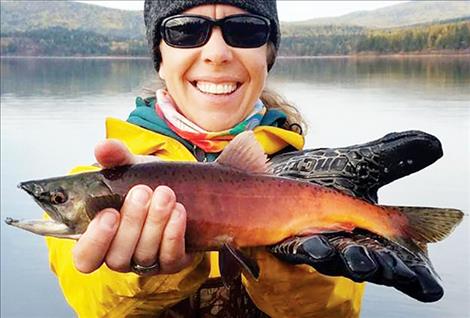Kokanee spawning wraps up at Lake Mary Ronan
Hey savvy news reader! Thanks for choosing local.
You are now reading
1 of 3 free articles.
News from Montana Fish, Wildlife and Parks
Montana Fish, Wildlife and Parks hatchery staff from Flathead Lake Salmon Hatchery recently completed the annual gathering of kokanee eggs that will benefit lakes across the state.
Lake Mary Ronan, a popular kokanee fishing destination in northwest Montana, serves as the egg source for Montana’s hatchery-produced kokanee. The eggs will hatch in December and eventually be distributed as 2-to-3-inch kokanee in the spring of 2020 into 28 Montana lakes.
Originally stocked in Montana over 100 years ago, kokanee are a popular fish species known for their flavor, catchability and sporting qualities. Kokanee are effectively a freshwater version of the Sockeye Salmon native to many Pacific Northwest lakes. Although larger kokanee will eat small fish, their typical diet consists of zooplankton and any available insects like midges. Some individuals may reach larger size but an average “keeper” kokanee ranges from 10 to 12-inches in Lake Mary Ronan.
“We typically stock only those waters with absent or very limited wild kokanee spawning,” FWP Region 1 Fisheries Manager Mike Hensler said. “Some lakes we stock have some natural reproduction but known predators or other factors like poor quality spawning habitat that limit that population. An example is the Thompson Lakes west of Kalispell. By stocking Lower Thompson Lake, we can augment the wild kokanee population in all the lakes enough to improve catch rates.”
Located in Somers and built in 1912, the Flathead Lake Salmon Hatchery also produces westslope cutthroat trout, Arctic grayling, and brook trout as space allows following spring salmon stocking.
FWP operates 12 fish hatcheries across the state, and these hatcheries annually stock approximately 45 million fish for sport fishing opportunities and native trout restoration across more than 830 lakes or reservoirs and over 20 rivers or streams.
















